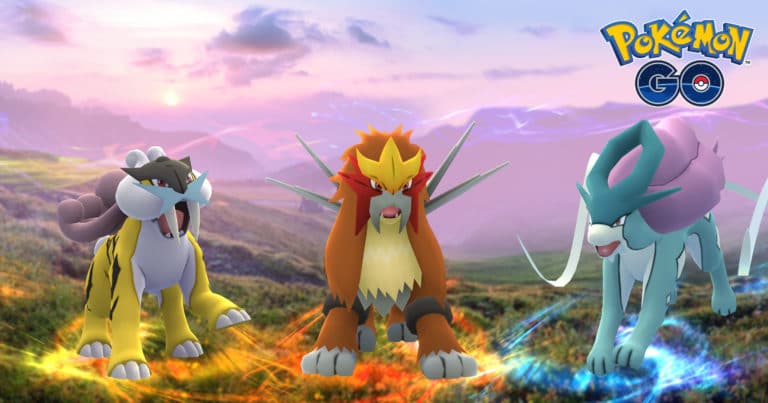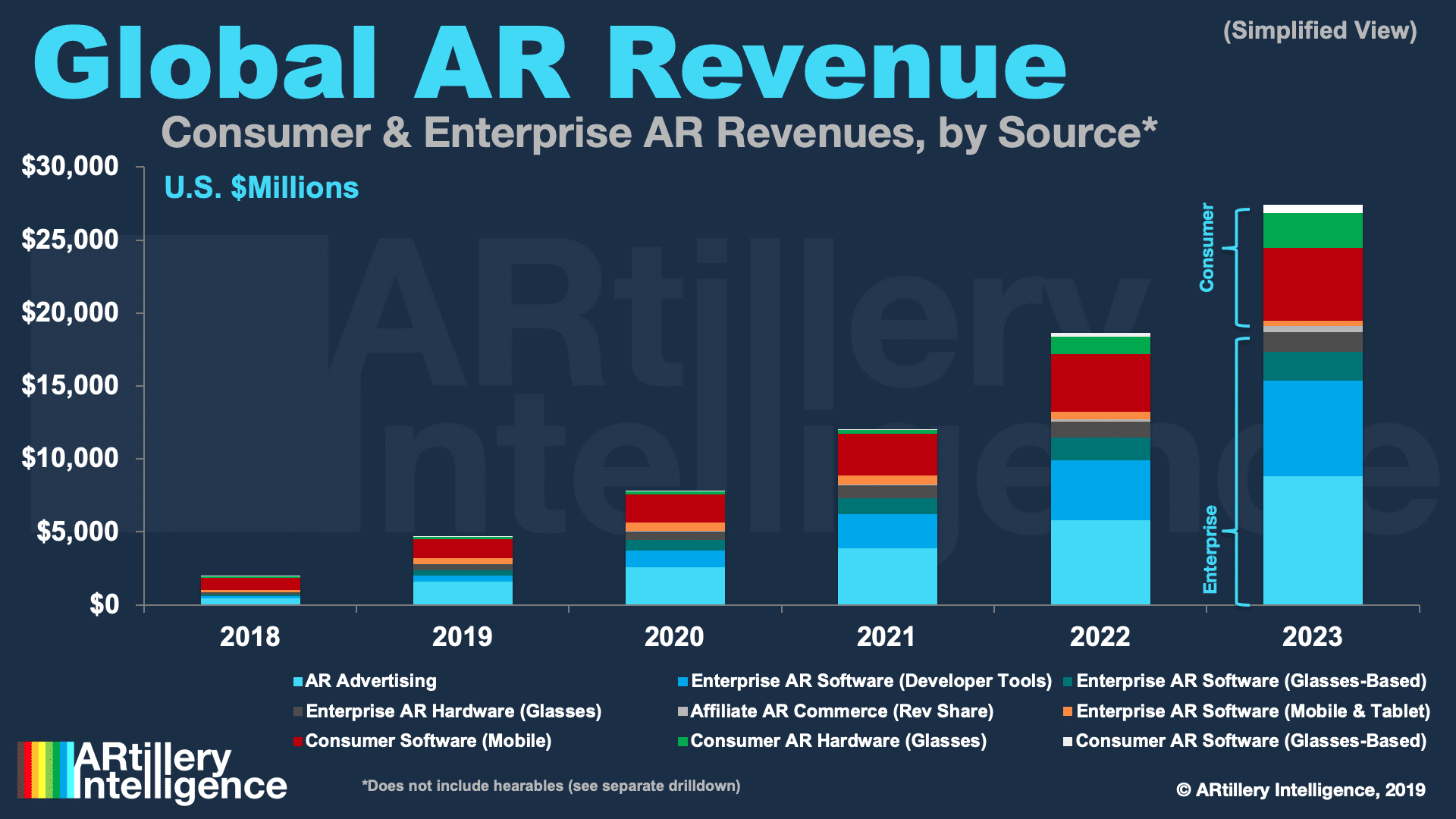
This post is adapted from ARtillery Intelligence’s report, Lessons From AR Revenue Leaders, Part II: Niantic. It includes some of its data and takeaways. More can be previewed here and subscribe for the full report.
Update 5/26/2020: Niantic today announced new features that bring more realistic interactions such as object occlusion to some Android phones. Read more here.
A lot can be learned from consumer AR’s early leaders. What are they doing right? How are they engaging users? And how are they making money? These are key questions in AR’s early stages, as there’s no standardized playbook and lots of experimentation underway.
This exercise includes pinpointing fitting AR use cases, as well as more granular strategies around user experience (UX). What types of AR interactions resonate with consumers? And what best practices are being standardized for experience and interface design?
Equally important is the question of AR monetization and revenue models. Just as user experience is being refined, questions over what consumers will and won’t pay for are likewise being discovered. In-app-purchases is the prevailing model, inherited from mobile gaming.
Niantic is one company leading the way with all of the above. It has built a real revenue-generating business around in-app-purchases in Pokemon Go. Moreover, the Real World Platform that powers the game could be the company’s long-term play as an “AR as a Service” powerhouse.

Staying Power
After tackling the debate last week over Pokémon Go’s designation as an AR app/game, what else can AR startups learn from the game’s success? Like we examined in Part I of this report series around Snapchat’s AR success and best practices, what are the transferable lessons?
First, to establish Pokémon Go’s credibility as a benchmark, it gained $3.1 billion in lifetime revenue, including its highest annual revenues to date in 2019. It reached $894 million in gross player spending and 55 million downloads, surpassing the $832 million from its 2016 debut.
But there’s an important caveat: its 2016 blitz has a greater revenue run rate and monthly pace, given that the $832 million was derived within 6 months after the game’s June launch. But this shouldn’t take away from the 2019 accomplishment, given its rebound from a 2017 low.
2017 brought in $589 million, which then rebounded to $816 billion in 2018. With respect to 2019, it should be noted that the year contained its fourth and fifth greatest revenue months to date, including August’s $116 million and September’s $126 million. So momentum is clearly on its side.

Bucking the Trend
One reason this is all notable is that the common arc for mobile games is to lose novelty. There are a few games that have been able to counteract this natural occurrence with a combination of game updates and challenging yet attainable and inherently-replayable game mechanics.
Pokémon Go’s staying power is owed to inherent qualities like strong IP and smart game mechanics. The game balances challenging play with attainable accomplishments. And though it’s technically asynchronous (one-player), it’s conducive to group outings and social activity.
“There are two different aspects of what makes something fun,” said Niantic’s AR lead Ross Finman at the GamesBeat Summit. “The first is novelty, which is where a lot of AR is today. Then there are mechanics [to] create new game loops that make people want to come back.”
Pokémon Go has also sustained its momentum and player interest — including the rebound quantified above — through active updates. That includes, most notably, 2019’s incorporation of Team Rocket. This was a new cast of characters that allowed the game to regain some novelty.
Niantic has also integrated AR+ Mode on some phones. This achieves the world-immersive features noted last week, allowing overlaid graphics to have more realistic interactions with their surroundings. This will continue to advance in the underlying Real World Platform
It also incorporated game mechanics around physical accomplishments by offering in-game rewards for distances traversed. This not only breeds novelty and gamification (and further ties digital and physical components) but it’s aligned with Niantic’s mission to get kids outside more.

Friends & Foes
In addition to adding game characters à la Team Rocket, Niantic has incorporated new ways to interact with in-game characters. This involves both friends and foes, playing on the inherent stickiness and engagement triggers for both gaining allegiances, and stoking competition.
On the “friends” front, Niantic incorporated Buddy Adventure. This builds on the existing buddy system where players select a sidekick from their captured Pokémon. Now, buddies can amplify in-game rewards (based on step counts) as if they’re virtually trailing players and collecting items.
“Since launching Pokémon Go, this might be the most collaborative feature we have had,” said Ryuta Hiroi, Niantic’s lead product manager for Buddy Adventure in a blog post. “Even with your phone in your pocket, you’ll feel like your buddy is right beside you.”
Niantic’s will next combine its Snapshot feature (covered below) with Buddy Adventure. Players will be able to sync game environments for group photos with buddies. This notably brings multi-player functionality to Pokémon Go for the first time – possibly a sign of things to come.
“The upcoming shared AR Mode creates a meaningful real-world social experience by letting up to three trainers place their Pokémon in the same space and take a photo together,” Niantic technical lead for Buddy Adventure and Pokémon GO client engineer Ethan Chan told Next Reality News.
On the “foes” front, Niantic has launched Pokémon Go Battle League. It lets players face-off by building on the existing trainer-battle structure. Players can unlock the feature by walking 5 kilometers (or paying a fee), then challenge others to battles in order to gain rewards and rank up.

Learning and Leaning In
Another notable addition is the Snapshot feature – a key lesson for AR UX design. As background, and as explored before, the average AR activation time per game session is 2-3 minutes. And the most prevalent use of that time is to pose with captured Pokémon to share the accomplishment.
So Niantic decided to learn from that organic player behavior, then lean into it. It formalized the use case in an in-game feature known as Snapshot. This takes the natural behavior that was already happening – aligned with AR’s natural interactions – and created an easier way to do it.
This also created natural marketing for the game, as viral media sharing from players posing with their captured Pokémon represents free promotion. These players are motivated by competitive spirit, creative energy (and probably some vanity), so Niantic simply created a tool to capture that.
This is also congruent with a key theme that continues to thread throughout this series: AR training wheels. AR shows the most success when developers integrate it as an organic and value-added component to existing behavior like sharing selfies. It’s about placing AR in users’ existing paths.
This is an AR user-experience concept also known as “AR as a Feature.” Rather than creating standalone apps that users have to deliberately download, it brings AR to where they already are. Practiced also by Snapchat, it’s an AR delivery vehicle that 51 percent of users experience.
For similar reasons, Niantic has limited AR to a feature rather than a primary function. This sparing use of AR where it’s organic and additive – rather than a gimmick or novelty – is a key design principle for Niantic. This will continue to drive its product development in all AR endeavors.
We’ll pause there and circle back next week to continue the discussion of how Pokémon Go is leading the way with AR revenues. Meanwhile, check out the full report here.
Update 5/26/2020: Niantic today announced new features that bring more realistic interactions such as object occlusion to some Android phones. Read more here.
